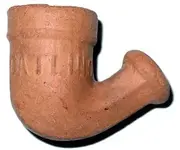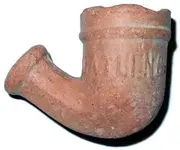outlawatheart
Hero Member
- Joined
- Jan 19, 2011
- Messages
- 811
- Reaction score
- 874
- Golden Thread
- 0
- Location
- Hamilton County IL.
- Detector(s) used
- White's DFX Spectrum
Upvote
0
How long have you collected?
 lol
loldefinitely not made by prehistoric, I think that's why they get called trade pipes. I have never read up on them but do know they were mass produced not to awful long ago. I have never hunted in Ohio all pieces were found in southern IL...Saline and Gallatin counties.Hey outlaw,
Is that not White Man stuff?
This is:

Looks like it was made in Ohio to me.
I've only found one that may have been made there... Its a glazed face pipe ...all the rest I've found are British made.
View attachment 904126
View attachment 904128

 I think there were a couple manufacturers- or more. Ohio, West Va. (and N. Carolina?). I'm sure someone knows. Yak
I think there were a couple manufacturers- or more. Ohio, West Va. (and N. Carolina?). I'm sure someone knows. YakThe largest manufacturer of those pipes was in Point Pleasant Ohio
definitely not made by prehistoric, I think that's why they get called trade pipes. I have never read up on them but do know they were mass produced not to awful long ago. I have never hunted in Ohio all pieces were found in southern IL...Saline and Gallatin counties.


Here's a paper on the Point Pleasant pipes: https://kb.osu.edu/dspace/bitstream/handle/1811/38903/Point_Pleasant_pipes.pdf
Hey outlaw,
The reason I said "White Man stuff" is mainly because of the marbles. I've never hunted in southern Illinois, but if I found reed stem pipes, in close association with clay marbles, I'd think White Man…
A lot of the reed stems were also produced in Pamplin, Virginia. Here's one that appears to be named after George Catlin:
View attachment 904176 View attachment 904177
"Acute angle. Color ranges from pale red to light orange. Round bowl encircled by a raised band below the
top. Raised "CATLINS" on each side of bowl. Stem is hexagonal, with the planes merging into the lower
portions of the round bowl. Stem terminates in a large, rounded lip. Produced by the Pamplin Co." Pamplin Clay Tobacco Pipes Minigallery - Museum of Anthropology - University of Missouri-Columbia
